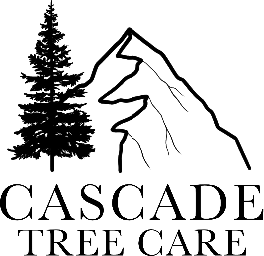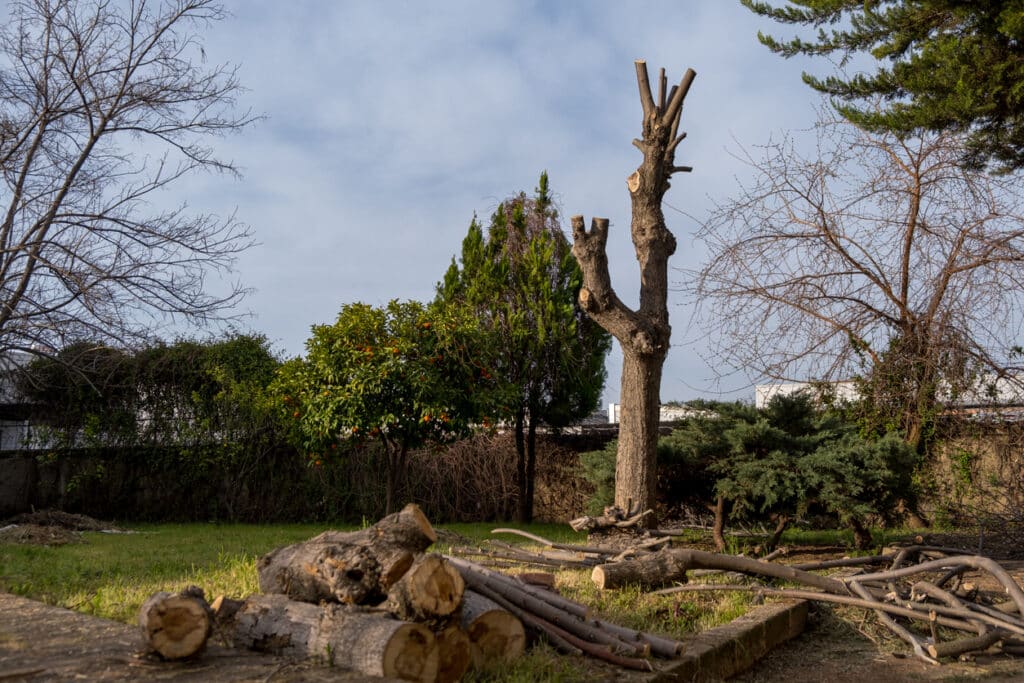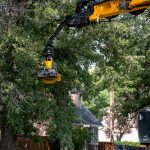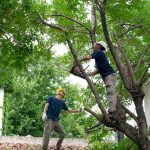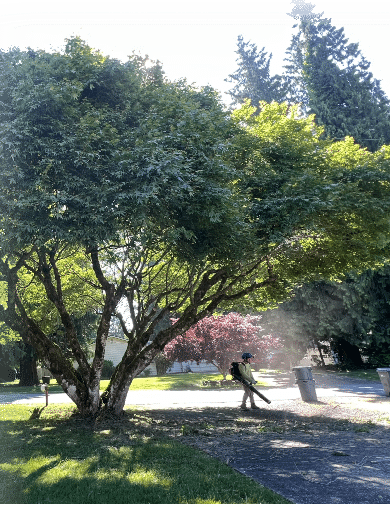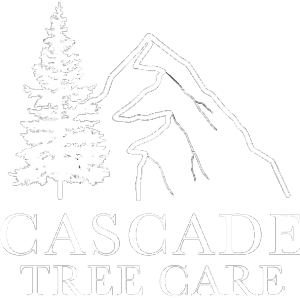Maintaining the health and aesthetics of trees in your landscape involves making informed decisions about their care. Tree trimming and topping are two common practices, but they serve different purposes and impact trees differently. This comprehensive guide will delve into the nuances of trimming and topping, exploring their differences, effects, and why understanding these practices is crucial for responsible tree care.
1. The Basics of Trimming and Topping:
Trimming is a selective process that involves removing specific branches to enhance a tree’s shape, health, and overall appearance. This practice is aimed at improving air circulation and sunlight penetration and reducing the risk of disease. On the other hand, tree topping, often referred to as “hat-racking,” involves severe and extensive pruning of a tree’s canopy, removing large sections of branches and foliage.
2. Purpose and Objectives:
Trimming: The primary goal of trimming is to promote healthy growth, remove dead or diseased branches, and maintain the tree’s natural form. Trimming can also help control the tree’s size and prevent interference with power lines or structures.
Topping: Topping is often performed to reduce a tree’s height quickly. It is sometimes done for practical reasons like preventing interference with utility lines or improving views. However, topping is highly controversial due to its negative impact on tree health.
3. Impact on Tree Health:
Trimming: Proper trimming supports the tree’s well-being by stimulating new growth, improving structural integrity, and preventing the spread of diseases. It encourages the tree to develop a strong framework of branches that withstand various weather conditions.
Topping: Topping weakens trees by removing a significant portion of their foliage. This process disrupts the tree’s natural growth pattern, leaving it vulnerable to sunburn, pests, diseases, and decay. The rapid regrowth that follows topping is often poorly attached and prone to breakage.
4. Aesthetic Considerations:
Trimming: When done skillfully, trimming enhances a tree’s appearance by accentuating its natural shape and beauty. The result is a visually appealing tree that complements the landscape.
Topping: Topped trees often appear disfigured and unnatural, detracting from the aesthetics of the landscape. The rapid regrowth can lead to a dense cluster of poorly spaced branches, compromising the tree’s beauty.
5. Long-Term Consequences:
Trimming: Properly trimmed trees tend to live longer and are less susceptible to diseases and storm damage. Regular, well-executed trimming can add years to a tree’s lifespan while maintaining its value and appeal.
Topping: Topped trees are more likely to experience structural failure, sunscald, and decay. They become liabilities instead of assets to your landscape. The cost of ongoing maintenance and potential removal can far outweigh the initial benefits of topping.
In the debate between trimming and topping, the choice is clear. When done correctly, tree trimming promotes healthy growth, maintains aesthetics, and prolongs the life of your trees. Topping has far-reaching negative consequences that can compromise a tree’s health and structural integrity. Understanding these practices’ differences empowers you to make informed decisions that benefit your landscape and the environment.
Transform your landscape with precision tree trimming by Cascade Tree Services. Dial 425-530-9697 now to schedule your appointment and enjoy healthier, more beautiful trees today!
